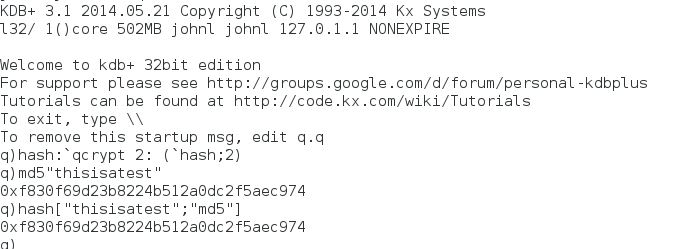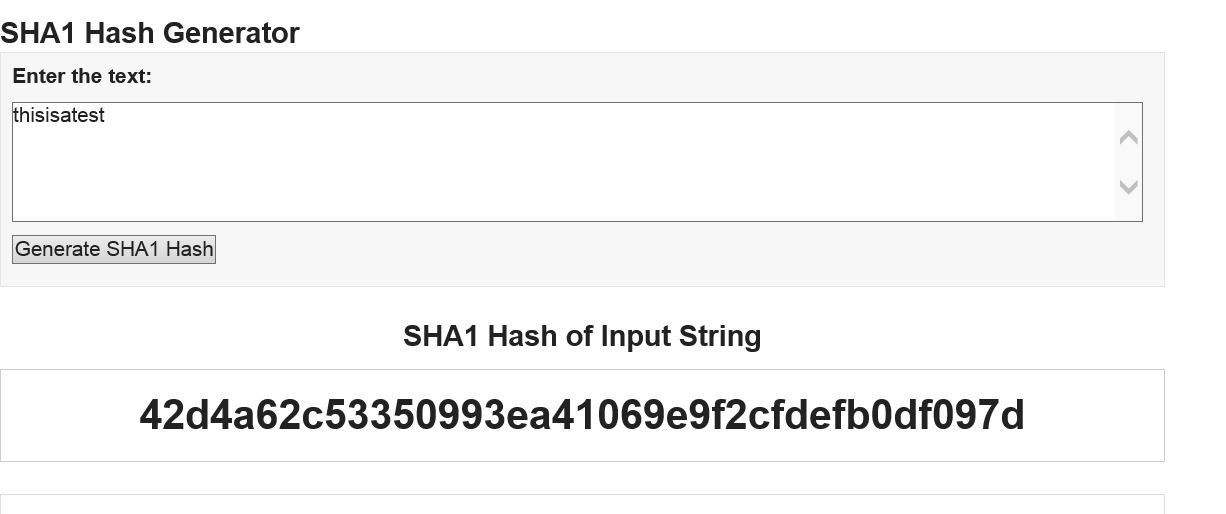
#Sha256 salted hash calculator password#
If this hash is seen in a database, we know that the user’s password is "12345". Since the hash of the same input never changes (see property (4) above), we can precompute the hash of common passwords and then check the leaked database data against those precomputed hashes.įor example, the SHA256 hash of "12345" is "5994471abb01112afcc18159f6cc74b4f511b99806da59b3caf5a9c173cacfc5". Many people tend to use common passwords like "password", "12345" etc. But it’s also very difficult to find any one of those infinite numbers of inputs given a specific output! What is salting and why hashing alone is not good enough - Problems with humans This is exactly what we want from a security point of view.ĭue to property number (5), there are an infinite number of inputs that can yield the same hash output. In fact, the only “entity” which would know the input to the hash function would be the end user who generated the password in the first place.

This is unlike encryption in which given the output and the encryption key, you can know the input.ĭue to this one-way property, storing a hashed value of a password is a good idea since if their hash is compromised (via a database leak), the attacker would not know the original password (which is the input to the hash function). If you only know the output, it’s impossible/difficult to know its input. As you can see, the outputs are verify different.Īll in all, hash functions are “one-way functions”. Input sensitivity: A small change in the input (even just one character), should have a large change in the output string. Predictability: The hash function should always return the same output given the same input.įixed Length Output: The output of the hash function always has the same length (number of chars), regardless of the input’s length. This is slightly different from (2) since in (2), you are given one input, and in this case, you can cook up any input. Second preimage resistance: If an input to a hash function is known, it should be hard to find another input that has the same hashed output.Ĭollision resistance: This says that it is hard to find any two inputs such that their hashed output is the same. For example, if I take a random SHA256 hash output ( string data type) like "401357cf18542b4117ca59800657b64cce2a36d8ad4c56b6102a1e0b03049e97", it should be very hard to know what the input to the hash function was that resulted in this output. Preimage resistance: Given the output of a hash function Out, it should be hard to find any input In, which when hashed, results in the same output ( hash(In) = Out). They are functions that have these properties:

This is where hashing or hash functions come into play. Using these keys, the attacker would be able to decrypt the encrypted passwords - making this method of storage weak. However, if the database is compromised, then the encryption keys would probably be compromised as well.
Using encryption may seem to be a good choice since the attacker would not know the actual passwords (because they are encrypted). This rules out storing passwords in plain text. The aim behind storing passwords securely is that even if the database containing them is compromised, the attacker can’t decipher any user’s actual password. To make matters worse, users tend to reuse passwords across services which makes storing them securely even more important. Storing passwords can be a nuance due to the liability of them being compromised.


 0 kommentar(er)
0 kommentar(er)
